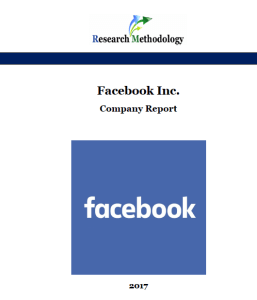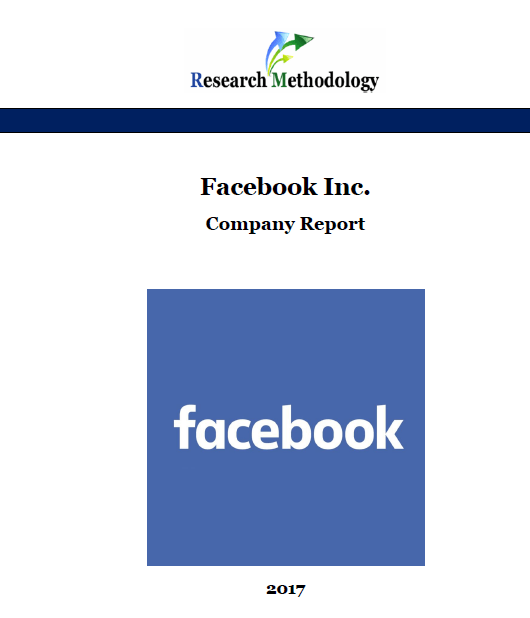Facebook Inc. Report

- Published: January 2017
- 9293 Words
- 39 Pages
Facebook Inc. is a social media giant that owns Facebook, Instagram, WhatsApp, Oculus and a range of other e-commerce businesses. Founded in 2004 in Harvard University dormitory by Mark Zuckerberg and several of his classmates, Facebook emerged to become the most popular social media site in the world attracting more than 1.13 billion daily active users and 1.03 billion mobile daily active users (Stats, 2016).
Facebook’s mission statement is “to give people the power to share and make the world more open and connected” (Annual Report, 2015) and the company generates revenues from selling advertising placements to marketers. Facebook business strategy is associated with an extensive and continuous focus on user experience, growth via acquisitions, new product development and continuously exploring the new ways of monetization.
The social media company employs more than 12600 people globally and in 2015 the company generated revenues of USD17.93 billion, which is an increase of 44% year-over-year and ad revenue was of USD17.08 billion, which is an increase of 49% compared to the previous year (Annual Report, 2015). Facebook has been successful in efficient capitalization on mobile advertising and its evolving role as a news source for increasing numbers of its users has positive implications on the long-term growth prospects of the business. At the same time, the social media company is not free of weaknesses and its major weaknesses include the dependence of revenues only on advertising, challenges in sustaining the growth rate of revenues and the dependence of the business on a few key personnel such as Mark Zuckerberg and Sheryl Sandberg.
Facebook Inc. Report contains the application of the major analytical strategic frameworks in business studies such as SWOT, PESTEL, Porter’s Five Forces, Value Chain analysis and McKinsey 7S Model on Facebook. Moreover, the report contains analyses of Facebook’s business strategy, leadership and organizational structure and its marketing strategy. The report also discusses the issues of corporate social responsibility.
1. Introduction
2. Business Strategy
3. Leadership
4. Organizational Structure
5. SWOT Analysis
5.1 Strengths
5.2 Weaknesses
5.3 Opportunities
5.4 Threats
6. PESTEL Analysis
6.1 Political Factors
6.2 Economic Factors
6.3 Social Factors
6.4 Technological Factors
6.5 Environmental Factors
6.6 Legal Factors
7. Marketing Strategy
7.1 7Ps of Marketing
7.2 Segmentation, Targeting & Positioning
7.3 Marketing Communication Mix
7.3.1 Advertising
7.3.2 Sales Promotion
7.3.3 Events & Experiences
7.3.4 Public Relations
7.3.5 Direct Marketing
7.3.6 Personal Selling
8. Porter’s Five Forces Analysis
9. Value-Chain Analysis
9.1 Primary Activities
9.2 Support Activities
10. McKinsey 7S Framework
11. Corporate Social Responsibility (CSR)
11.1 CSR Programs and Initiatives
11.2 CSR Criticism
12. Recommendations
List of Figures
Figure 1 Facebook Inc. Organizational Structure
Figure 2 Facebook monthly active users (in millions)
Figure 3 Facebook Porter’s Five Forces
Figure 4 Most popular social networking websites in the USA (as of August 2016)
Figure 5 Facebook Value Chain Analysis
Figure 6 Facebook Inc. business operations mapping
Figure 7 Facebook McKinsey 7S Framework
List of Tables
Table 1 Facebook Inc. SWOT analysis
Table 2 Facebook segmentation, targeting and positioning
Table 3 Facebook CSR performance
Alphabet Inc.
Facebook Inc.
Friendster
Deloitte
MySpace
Oculus VR, Inc.
Tumblr
vKontakte
WhatsApp Inc.
Yahoo!
Yelp
Why this report is so cheap?
1. Reports offered in this portal are produced by a small group of academic writers headed by John Dudovski.
2. Our reports are shorter compared to reports produced by large research companies. Company reports are produced to assist with academic works of business students in particular. Therefore, all points that do not relate to academic needs of business students are left out.
3. We do not have huge fixed expenses large research companies do, thus, we are able to deliver reports for a little cost.
How do I receive the report?
After completing the payment you will receive a link to the e-mail related to your Pay Pal account or the e-email you entered when specifying bank details. You can download the report via this link. The report is downloaded in PDF format. The link will stay active for 7 days.
How can I use the report to complete my academic assignment/research?
Reports offered by research-methodology.net are professionally written samples in their respective areas. Reports are intended to be used as guides and sources of secondary data for reference purposes.
How to reference this report?
You can reference this report in the following manners:
Harvard Referencing System
Dudovskiy, J. (2017) Facebook Inc. Company Report, UK: Research Methodology, Available from: https://research-methodology.net/research-methodology/referencing/
APA Referencing System
Dudovskiy, J. (2017). Facebook Inc. Company Report, Retrieved from https://research-methodology.net/research-methodology/referencing/
Vancouver Referencing System
Dudovskiy J. Facebook Inc. Company Report. UK: Research Methodology, 2017, [cited ‘the date you used the report’] Available from: https://research-methodology.net/research-methodology/referencing/
I did not receive the link/I can not download the report?
If you have any difficulties with downloading reports you have purchased please e-mail us the details of your purchase. We will send the report to you as an e-mail attachment shortly.
- Published: January 2017
- 9293 Words
- 39 Pages




